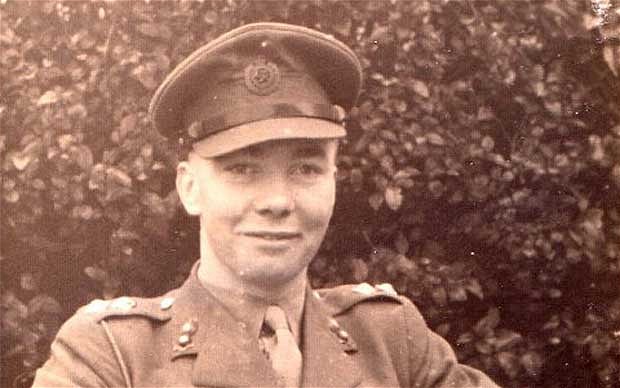

101 (City of London) Engineer Regiment
(Explosive Ordnance Disposal)
Regimental Association
Lieutenant Colonel Eric Wakeling
Died 11th November 2013

Eric Edgar Wakeling was born at Deal, Kent, on August 1 1920. His father managed a food processing factory and Eric was educated at Sir Roger Manwood’s School, Sandwich. He enlisted in the Army in 1936 and served in the Army Apprentices’ College for three years before being commissioned in 1940.
When he joined No 3 Bomb Disposal Company, two of its sections had just returned from Birmingham, where there had been heavy raids. They were leaderless; their officers and sergeants had been killed.
Wakeling was in no doubt that he was a replacement. Officers at first had little training and, as a subaltern and section commander, in the early part of the war life expectancy was about 10 weeks. The odds improved once BD units acquired more experience and better equipment to help them tackle the devices.
It was lonely work. Officers were often working on their own and much of the time there was no way of telling why one of them had been killed and so avoiding fatal mistakes in future. A “Category A” UXB, such as one which had halted production at a tank factory or was buried under the runway of an RAF station, had to be dealt with at once. It might be on a time delay fuse set to go off at any moment. The death of a BD officer in those circumstances was regarded as an acceptable risk.
Wakeling would reconnoitre the site and then the BD squads would work around the clock to dig out the bomb, which might be up to 50ft underground. The slightest vibration — a passing train or breaking up concrete — might re-start a clock or explode a bomb with a sensitive fuse.
On one occasion, working on an unexploded bomb in a brewery, Wakeling had great difficulty in extracting a fuse that he had not encountered before. As soon as it had been removed it was rushed to the Directorate of Bomb Disposals. It turned out that the device was equipped with mercury switches so sensitive that the slightest movement in any direction would explode the bomb – a deliberate attempt to kill any bomb disposal officer unfortunate enough to handle it.
“It was only by the greatest luck that I was still alive,” Wakeling wrote later. “The fuse had a slight manufacturing fault in the system.”
From 1943 minefields which had been sown when Britain was threatened with invasion began to be cleared. This was a hazardous task as few accurate maps had been kept and, as many mines had been placed on beaches, wind and water had often moved them or rendered them unstable. Detecting mines amid shifting shingle was a nerve-shredding task. Wakeling was posted to 14 BD Company which had the job of clearing the Yorkshire coast and was then based at Shoreham, Sussex.
After 14 BD Company was disbanded in 1946 he moved to 12 BD Company at Horsham, Sussex, as second-in-command. He was in the War Office for a spell before being demobilised in 1947.
In civilian life Wakeling worked for Heinz and then for the pharmaceutical and household products firm Johnson & Johnson. In 1951 the Army Emergency Reserve was formed and, the following year, he became adjutant of 142 Regiment. He commanded it in 1965 and retired from the Army in 1967. He was awarded the Emergency Reserve Decoration. Settled in a village in Buckinghamshire, he was a volunteer driver for the elderly and disabled and for the county’s ambulance service. After his wife died, he moved to Kent. He was regarded latterly as one of the last living links with wartime bomb disposal.
He published several books including The Lonely War (1994); Photographic Story of Bomb Disposal (1995); Danger of UXBs (1996); and A Short History of Bomb Disposal (1998).



